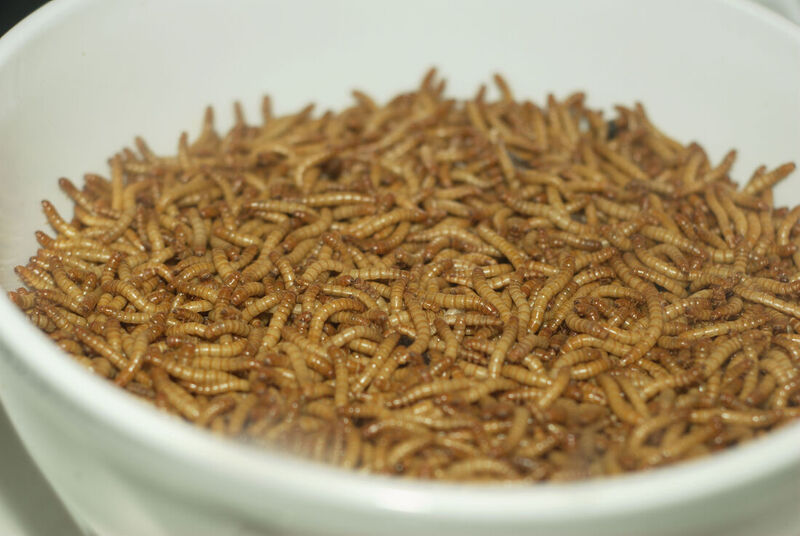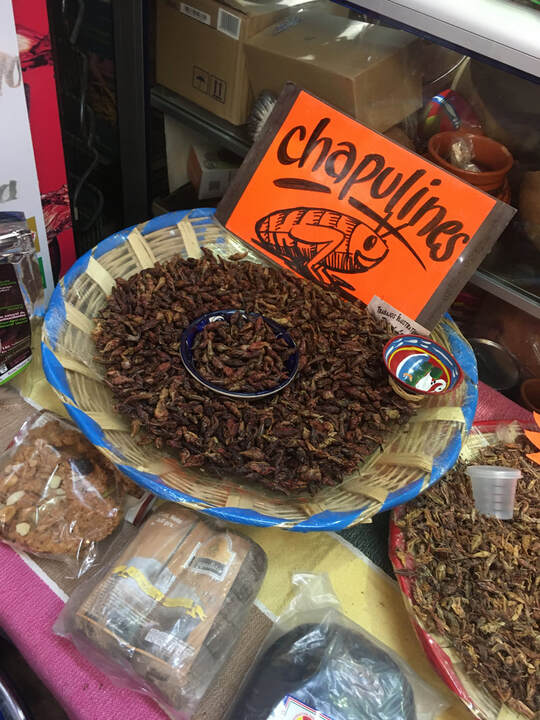Insects: Friends, Foes, or Food?
Every year, the threat of climate change becomes more pressing. Climate activists warn about the melting of the ice caps, rising sea levels, and other side effects of global warming. Politicians debate what to do about the rising temperatures and increasing natural disasters, from wildfires burning in California or hurricanes striking Florida. This is a global issue, not just an American problem.
One up-and-coming industry promises to help solve this issue: entomophagy, better known as eating insects. To some people, the concept of eating insects sounds horrifying. Thinking about maggots, mealworms, and crickets conjures a feeling of disgust. But in some cultures, eating bugs is commonplace. In Mexico, chapulines, roasted and seasoned crickets, are a cheap and delicious snack. In Zimbabwe, macimbi, protein-rich mopane worms, are a fan favorite. In Laos, white ant egg soup is an expensive luxurious cuisine. In fact, Europe and North America are the only continents in the world (not counting Antarctica) where the general population frowns upon eating insects.
If the rest of the world already consumes insects, why do Americans and Europeans think the practice is so distasteful? Cultural and societal influences have played a large role. Bugs are not usually seen in Western cuisine, making them unfamiliar to westerners, and unfamiliar things tend to be treated with fear and disgust.
With that being said, this can be overcome. It has before with, for example, sushi. Before the 1970s, sushi was unheard of in America and the idea of eating raw fish was appalling to many. But then Tokyo restaurateurs came to Los Angeles to try their hand at making it big, and Hollywood stars began to go to these restaurants. After seeing celebrities endorse this new cuisine, it quickly became popular in America, and now there are sushi places across the country.
One up-and-coming industry promises to help solve this issue: entomophagy, better known as eating insects. To some people, the concept of eating insects sounds horrifying. Thinking about maggots, mealworms, and crickets conjures a feeling of disgust. But in some cultures, eating bugs is commonplace. In Mexico, chapulines, roasted and seasoned crickets, are a cheap and delicious snack. In Zimbabwe, macimbi, protein-rich mopane worms, are a fan favorite. In Laos, white ant egg soup is an expensive luxurious cuisine. In fact, Europe and North America are the only continents in the world (not counting Antarctica) where the general population frowns upon eating insects.
If the rest of the world already consumes insects, why do Americans and Europeans think the practice is so distasteful? Cultural and societal influences have played a large role. Bugs are not usually seen in Western cuisine, making them unfamiliar to westerners, and unfamiliar things tend to be treated with fear and disgust.
With that being said, this can be overcome. It has before with, for example, sushi. Before the 1970s, sushi was unheard of in America and the idea of eating raw fish was appalling to many. But then Tokyo restaurateurs came to Los Angeles to try their hand at making it big, and Hollywood stars began to go to these restaurants. After seeing celebrities endorse this new cuisine, it quickly became popular in America, and now there are sushi places across the country.
Image Source: "Chapulines en el mercado" by Ivangomez123 is licensed under CC BY-SA 4.0
Unlike sushi, insects also hold the promise to help combat climate change. The meat industry is a huge contributor to the carbon dioxide emissions that are worsening global warming. The more carbon dioxide, a common molecule, is released, the warmer the Earth gets because carbon dioxide traps the heat of the sun. Insects, on the other hand, release a lot less carbon dioxide into the atmosphere. As such, consuming more insects rather than meat products would help slow climate change.
Another advantage of eating insects involves the health benefits. A study on the nutritional composition of stick insects as a measure of healthiness found that they did not have a lot of carbohydrates, which are usually found in foods like rice, potatoes, and bread. However, stick insects are rich in calcium, which helps strengthen bones, and protein, an essential nutrient that helps maintain muscle mass and promote muscle growth.
Potential concerns regarding eating insects have to do with the way insects are farmed. Since insects are tiny, insects must be mass-produced if they are to be eaten by the general public. This means that hundreds of thousands of insects, whether they be maggots, crickets, or mealworms, will have to be raised.
A prime concern of some people is the ethical nature of raising such a large number of insects and then killing them. If insects feel pain, this way of farming may generate lots of pain. However, no one knows the extent to which insects feel pain, so this has been largely a dead end.
Ultimately, insects do not have to completely replace meat. But they remain a promising, environmentally friendly, nutritious option that may soon be abundant in American and European grocery stores.
Another advantage of eating insects involves the health benefits. A study on the nutritional composition of stick insects as a measure of healthiness found that they did not have a lot of carbohydrates, which are usually found in foods like rice, potatoes, and bread. However, stick insects are rich in calcium, which helps strengthen bones, and protein, an essential nutrient that helps maintain muscle mass and promote muscle growth.
Potential concerns regarding eating insects have to do with the way insects are farmed. Since insects are tiny, insects must be mass-produced if they are to be eaten by the general public. This means that hundreds of thousands of insects, whether they be maggots, crickets, or mealworms, will have to be raised.
A prime concern of some people is the ethical nature of raising such a large number of insects and then killing them. If insects feel pain, this way of farming may generate lots of pain. However, no one knows the extent to which insects feel pain, so this has been largely a dead end.
Ultimately, insects do not have to completely replace meat. But they remain a promising, environmentally friendly, nutritious option that may soon be abundant in American and European grocery stores.
RELATED ARTICLES
|
Vertical Divider
|
Vertical Divider
|
Vertical Divider
|






